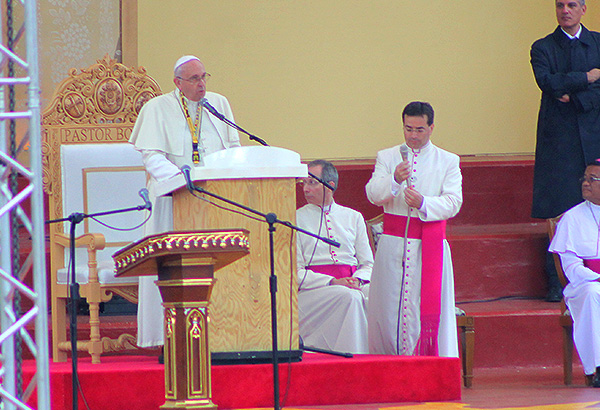continued … Prior to 1965, the Latin response: “ET cum spiritu tuo,“ which literally means “And with your spirit,” when translated into the English liturgy became “And also with you.” The translation was thought to convey the same meaning but be more straightforward. The liturgists of the English translation commission (ICEL) burned the midnight oil as they debated how best to achieve a style appropriate to English usage. How to deal with the long periodic sentences that gave the Latin its characteristic rhythm? The ICEL decided to break the sentences down into shorter components. A revised Latin text of the Mass was released in 1969 and its full English translation by the ICEL was prepared and released in 1970. Considering the pressures, it was remarkable that so much was achieved. Nevertheless, when the first English translations came out, the bishops of England and Wales were unhappy and were joined with the Scots, Irish and Australians to turned out their own partial version of the English translation. Complains were sent to Pope Paul VI that the English, French, German and Spanish vernacular translations were watered down and endangering church doctrine. Nonetheless, that first English translation was used with minor changes until November 2011. Everyone concerned with the translation process recognized the need for improvement. A second edition of the Latin texts came out in 1975 and the ICEL began translation work in 1983 to produce a second English translation of the Mass. The hope was to producing a more poetic translation. That second version had a heightened style but was also criticized for not being sufficiently literal. It barely pass the 2/3 majority vote needed by the American bishops conference, but went on to be approved by all 11of the English-speaking conferences of bishops and was sent to Rome for approval in 1998. However, in 2001 the Vatican issued new instructions to be used on the translation of Latin text which called for a strict literal translation and a more elevated tone. It was a major reform to the vernacular reform. Pope John Paul II then created a small group of bishops to oversee English translations. Based on the new translation rules, The Vatican rejected and shelved the 1998 English translation of the Mass that had been worked on for 13 years by so many people. That work has never been seen by the English-speaking world at large. The ICEL was disbanded and then recreated with new translators, who began work on a new English translation of the Mass. This new more literal English translation was completed and began use on the First Sunday of Advent 2011. In addition to the retranslated response: “And with your spirit,” many of the people’s parts, along with all of the prayers proclaimed by the priest, have changed significantly to follow Latin word order and grammar. Lost in translation, or a translation lost?
Sources: News.VA, uscatholic.org, holyfamilyartesia.org, Commonwealmagazine., Catholic.com, translate. google.com

